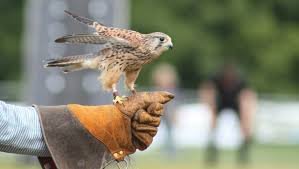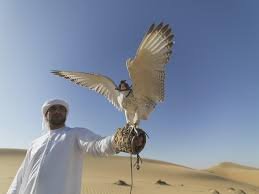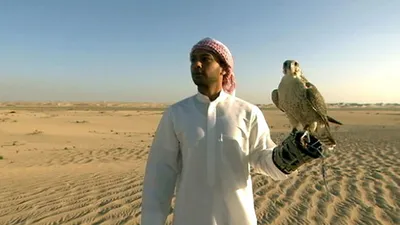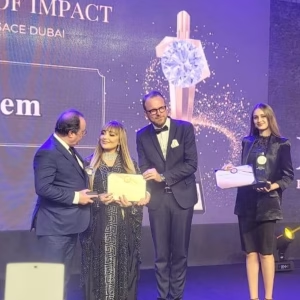In the heart of the Arabian desert, where dunes stretch endlessly beneath the sun, a timeless bond thrives between man and bird. This is falconry—not merely a sport or tradition, but a profound cultural legacy woven into the soul of the United Arab Emirates.
To the rest of the world, falcons may symbolize speed or sharp vision. But in the UAE, they signify *nobility, patience, heritage, and pride. Falconry here is more than a skill; it’s a *living testament to history, carried from Bedouin tents to modern cities, from dusty skies to high-tech falcon hospitals. It is, quite simply, one of the most treasured symbols of Emirati identity.
A Tradition Rooted in Survival
The origins of falconry in the UAE stretch back *thousands of years, with evidence pointing to its presence in the Arabian Peninsula as early as **2000 BCE. For the Bedouins—nomadic desert dwellers—it wasn’t a hobby; it was a *means of survival.

Food was scarce, and falcons were used to hunt small animals like *houbara bustards, hares, or other game. Trained to spot and pursue prey with unmatched speed, these birds were the *hunter’s partner in the harsh desert landscape.
But beyond utility, falconry became a revered practice. The bond between falconer and bird grew deeply symbolic, reflecting values like trust, discipline, and respect for nature.

The Falcon as a National Icon
In today’s UAE, falconry has transformed from necessity to *national pride—recognized not just locally, but globally. In 2010, *UNESCO added falconry to its Representative List of the Intangible Cultural Heritage of Humanity, acknowledging the UAE’s role in preserving and promoting this tradition.
You’ll see falcons on *UAE currency, passports, government logos, and airline insignias. Even the national airline, *Etihad Airways, once had a trained falcon as a frequent flier (yes, falcons are legally allowed on planes in first class in the UAE).
Why such reverence?
Because to Emiratis, the falcon represents the strength of character their ancestors needed to thrive in the desert. It is graceful but fierce, noble but free—much like the story of the UAE itself.
Falconry as a Rite of Passage
In Emirati households, falconry is often passed down through generations—a rite of passage between father and son, and increasingly, daughters too. Children learn not just how to handle falcons, but how to care for them, read their moods, and communicate without words.
Training a falcon requires immense patience and dedication. Birds are not domesticated pets; they are wild, with a spirit that must be understood rather than controlled. Falconers often form bonds with a single bird for an entire season, waking early for training flights and nurturing the bird’s health like one would care for family.
This connection teaches respect, humility, and responsibility—values central to Emirati culture.

Where Falconry Lives Today
1. Falcon Hospitals and Conservation Centers
The UAE is home to some of the *world’s most advanced falcon hospitals, like the renowned **Abu Dhabi Falcon Hospital, which treats over 11,000 falcons annually. These institutions are not only medical centers but also *conservation hubs, helping protect endangered species and promote ethical falconry practices.
Visitors can tour the hospital, watch a falcon pedicure, and even hold one of the majestic birds.
2. Falconry Festivals and Competitions
Falconry has evolved into a celebrated sport in the Emirates. Events like the Mohammed bin Zayed Falconry Championship or Al Dhafra Festival draw falconers from across the region. Birds compete in categories like speed racing, luring, and GPS-tracked hunting.
These festivals aren’t just about competition—they’re platforms for cultural exchange, where elders, youth, and international guests come together in celebration of shared heritage.
3. Museums and Educational Programs
Places like the Sheikh Zayed Heritage Festival and Qasr Al Hosn host falconry exhibitions that educate the public about the tradition’s historical and ecological significance. Schools often organize field trips where students learn the science, ethics, and emotional intelligence required in falconry.
Women in Falconry
In recent years, Emirati women have increasingly embraced falconry, challenging the idea that it’s a male-only domain. Pioneers like Amna Al Mansoori have become respected figures in the falconry community, proving that passion and skill transcend gender.
Female falconers often train and compete at the same level as men, highlighting the UAE’s evolving yet respectful take on tradition. It’s a sign of how heritage can adapt—inclusive, empowered, yet still deeply rooted.
A Balance of Tradition and Technology
Modern falconry in the UAE reflects the broader national ethos: honor the past while embracing the future.
Today, falconers use GPS trackers, high-speed cameras, and drone simulations to train birds. Some use apps to log feeding schedules or track a bird’s performance in competition. But the essence—the silent communication, the mutual respect—remains unchanged.
Even the birds themselves travel with custom-made passports and undergo strict medical checks, ensuring their well-being is prioritized above performance.

Ethical and Environmental Awareness
The UAE has made significant efforts to ensure falconry is practiced *responsibly. Conservation programs protect endangered birds and promote captive breeding over wild capture. Educational campaigns raise awareness about *illegal hunting and trafficking.
There’s a growing recognition that preserving falconry means protecting falcons, their prey, and their desert ecosystem.
Final Thoughts: More Than a Bird, More Than a Sport
To truly understand the UAE is to understand its love for falcons.
They are not just birds of prey—they are symbols of legacy, freedom, and identity. Falconry embodies the Emirati spirit: resourceful, respectful, resilient.
In the falcon’s sharp eyes, Emiratis see echoes of their ancestors scanning the horizon. In its flight, they see the story of a nation that rose from the sands with wings wide open to the future.
So the next time you see a falcon perched on a gloved hand in the UAE, look closer. You’re not just witnessing a tradition—you’re watching the soul of a people take flight.
Do follow UAE Stories on Instagram.
The Evolution of Emirate Art: From Traditional Crafts to Contemporary Masterpieces













